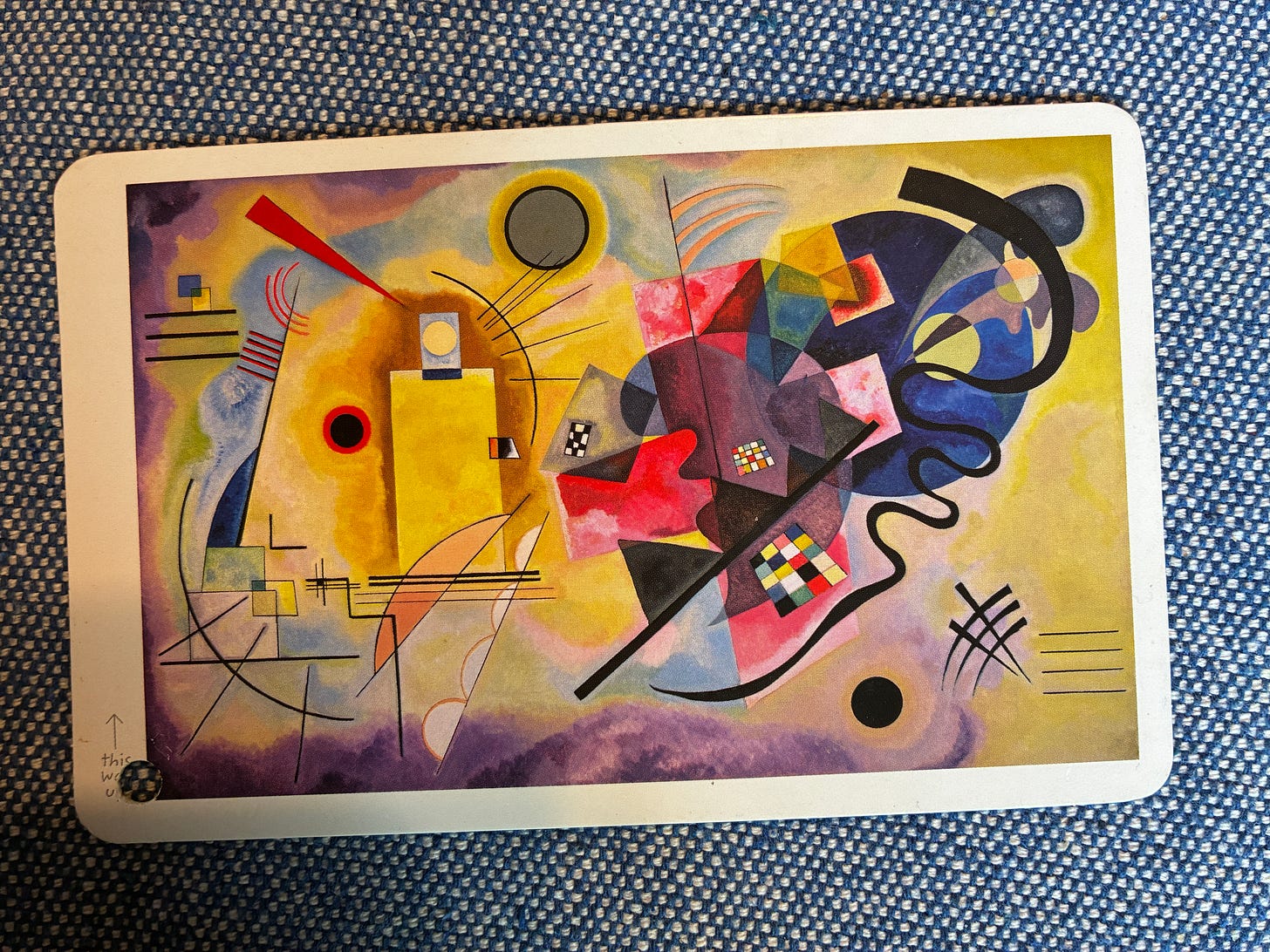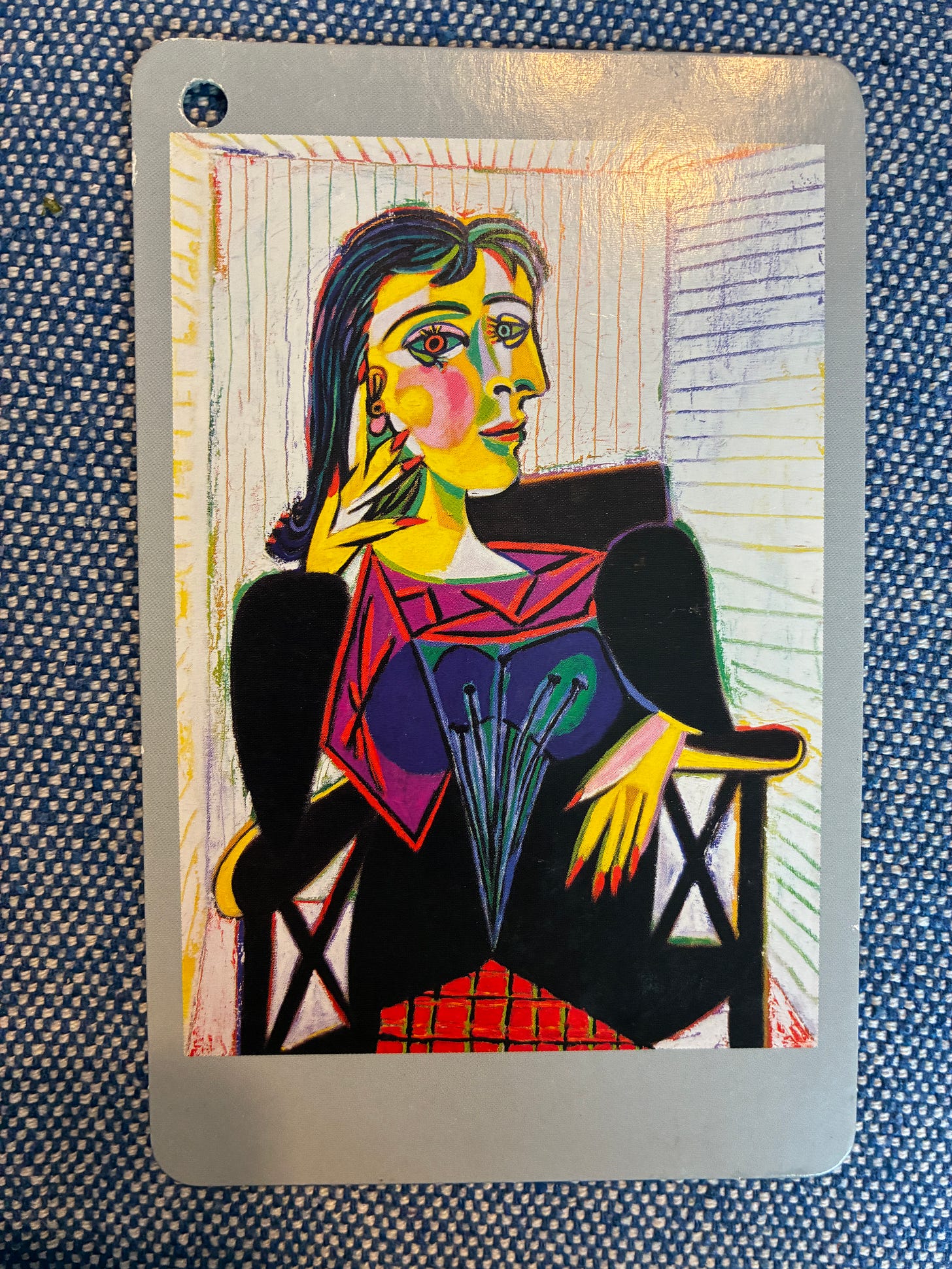I wasn’t academically introduced to art history until college, and I wish I had been given the skills and the appreciation earlier. My family is pretty artsy (lots of museums as a kid) - but my school was a traditional public school where they talked about great works of art while the projector transposed them onto the wall.
Teaching art history and art appreciation to children plants seeds that grow into their academic and artistic endeavors in so many beautiful ways. I love when we are reading something and my son points out that it reminds him of a painting we have studied - integrating his learning without prompting.
Here is how I’ve gone about teaching art history and appreciation:
In January | Introduction
I started using Usborne’s Famous Paintings cards. I’d introduce 1-2 cards per week. We’d study the painting(s), read the history on the back, and then discuss them. For the rest of that week we’d look at the cards again and continue to point out things: what we like, don’t like, does it remind us of anything we learned or experienced that week. Art is a representation of life - so it’s important to study it for understanding of others, but also to pull it back into making sense of our own experience.


In March | Memorization
Now that we had discussed 15 art pieces in depth, I stopped introducing new art and instead focused on memorization of the artist and title for each of the pieces. We would come up with fun and silly ways to remember these. They really enjoy coming up with memorable phrases. Here are some examples of the paintings we memorized and how we memorized them:
Memorized the title using the subject matter and the artist by saying it looks like she is “looking in a mirror” - so Vermeer.
We memorized the title by pointing out that if you “read” the painting left to right you encounter yellow, then red, and then blue. Memorized the artist by pointing out that the circle on the top looks like the top of a can - so Kandinsky.
We memorized the title using the subject matter and the artist by saying we’d like to go to this scene - so van Gogh.
We memorized the title by the subject matter and the artist by saying that the grass looked like it needed to be mowed - so Monet.
We memorized the title by finding the number 6 in the lines and tracing it with our fingers and memorized the title by saying it sort of looked “icky” - Jackson Pollock.
For this we memorized the title by saying it looks like the lady is sitting next to a door and that she is picking her ear - so Portrait of Dora Maar by Pablo Picasso.
I recognize that this is not the most technical and/or classical way for children to be introduced to art history… but it sure is fun and enjoyable! My four (now five) year old always wants to sit at the table while we do school and asks to “play” the art card “game”. When we go to bookstores, I’ll see them voluntarily go to the art section and start looking through the books. My kids are so proud that they can identify the title and author.
I’m sure there is room for criticism in my approach (isn’t that what the internet is for?) and for some it would seem that art appreciation and laughter are contradictory terms. However, these are children learning about art - keeping things fun, a little silly, and approachable works. Plus, a lot of great artists weren’t moral people and so I don’t worry about the dignity (or lack thereof) in remembering Picasso with “picking one’s ear”.
In April | Identification and Comparison
Now that he has memorized the 15 artists and one of their pieces, I have started pulling up different works by the same artists and asking him who he thinks painted it and why. As he gives his reasoning, I respond with helpful vocabulary summarizing what he is saying:




“Oh! So you’re noticing that the subject matter between this painting and _____ is similar.”
“So the painting technique and application looks similar? I agree!”
“So you’re saying that this painting style is abstract just like _____?”
When he’s finished giving his reasoning, I tell him if he is right or wrong and then we compare the art card to it. The first time we did this, my son got 3 out of the 4 paintings correct. He misidentified a painting by Turner as Monet. So we look at both the Turner card and Monet card as we talk about the painting some more - we point out their similarities and then spend time on the differences between the two.
In May | Presentation
At the end of each semester, my son gives a presentation over what he has learned. It’s essentially an oral exam - but doesn’t lean on handwriting to demonstrate his knowledge.
For the art portion of his presentation, I’ll give him the 15 paintings that he’s memorized (just to help him remember/review) and then I’ll give him a selection of artworks by those artists and ask for him to identify them and tell me why.
Wishing that you might be put in the way of great art (and laughter) this week, as well as good thoughts, good words, and good deeds. xx









What a great way to teach art history! Thanks for sharing!